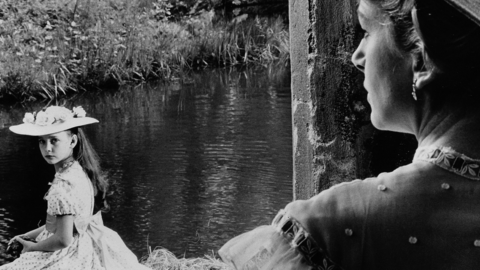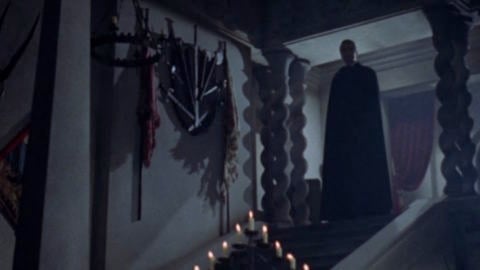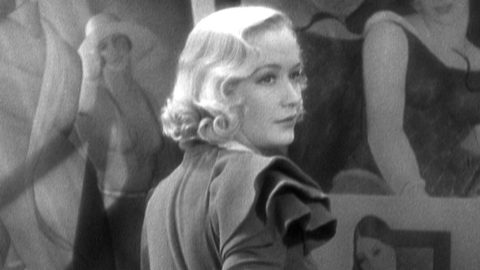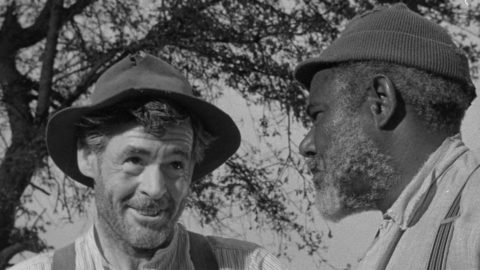TCM Diary: The Hands of Jack Clayton
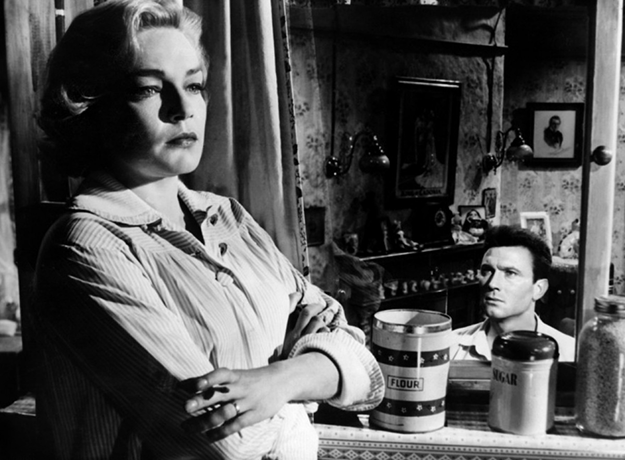
Room at the Top
In photographs, Jack Clayton has a rather delicate, vulnerable face, yet as a filmmaker he was capable of putting his fist through a wall to express his displeasure. During his long apprenticeship as an assistant director and then an associate producer, Clayton was perhaps most influenced by the courtly and wicked John Huston, who was known for taking on varied material. And in Clayton’s films—seven features, one TV movie, all literary adaptations—it often feels as if he is a Stanley Kowalski who wants desperately to be Blanche DuBois, and sometimes vice versa.
It is hard to imagine the male-oriented Huston obtaining the revelatory performances that Clayton drew from Simone Signoret in Room at the Top (1959), Deborah Kerr in The Innocents (1961), Anne Bancroft in The Pumpkin Eater (1964), and Maggie Smith in The Lonely Passion of Judith Hearne (1987). Though these actresses all work in very different styles, the effect on screen is the same: graphic emotional exposure with no defenses up at all. Smith acted for Clayton three times, and she felt that he was so good with actors because he had been a child actor himself and had played on stage in the 1930s with Peggy Ashcroft.
Clayton was an Expressionist who was not afraid to use blunt visual effects to get across the subjective agony of his characters. In his films there is no separation between past and present, or between the living and the dead, which is why The Innocents, an adaptation of Henry James’s The Turn of the Screw, is such an immaculately ambiguous film. Clayton said that he believed in ghosts, and yet the ghosts that come back to haunt Deborah Kerr’s Miss Giddens in The Innocents are both convincingly present and also convincingly specters that could be emanating from her own repressed Victorian mind. Clayton uses the wide Cinemascope in The Innocents so that the characters are always kept in focus and in balance in different parts of the frame, but it is what remains outside of the very sharply defined frame that obsesses that entire shivery movie.
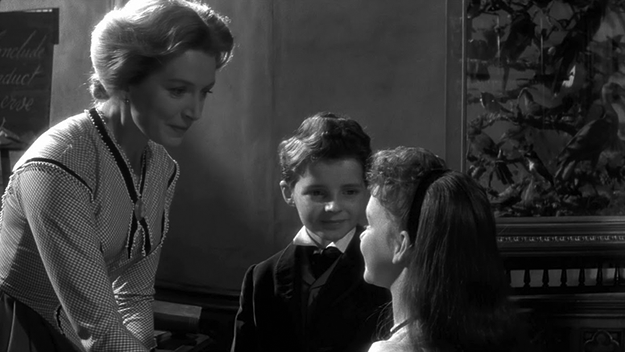
The Innocents
The choosy, even finicky Clayton thought through every aspect of his few films beforehand, and he always shaped them in terms of unexpected contrast and shifting dynamics. A quiet scene in which the camera moves slyly through a room in The Innocents is followed by a hard cut to a little girl splashing in her bath. And counterintuitively for a ghost story, Clayton avoids the expected motif of shadows in The Innocents and instead has almost the whole movie play out in harsh, bright light with odd dissolves between scenes to unsettle us. With his cinematographer Freddie Francis, Clayton experimented with some of these dissolves so that they fade briefly to white in order to foster the sense of photographic and psychological exposure he wanted.
For Clayton, no visual detail is too small to support the work of his actors. Notice the way that the camera in The Pumpkin Eater suddenly becomes hand-held at a crucial point in the drama between a philandering screenwriter, Jake (Peter Finch), and his depressive, compulsively childbearing wife, Jo (Anne Bancroft). It happens very briefly, right before Jake snaps at Jo: “I wish you’d shut up . . . I wish you’d die!” Notice too the way Clayton has the light drain away from Robert Redford’s face in The Great Gatsby (1974) after the crucial lines: “Can’t repeat the past? Of course you can.” Time moves backward ceaselessly in Clayton’s films—a theme that is expressed visually in The Pumpkin Eater when the smoke weirdly drifts back into Jo’s cigarette as she discusses the failures of her life with her second husband.
Clayton often gets uncomfortably close to his characters with his camera, and this can lead to effects that feel shrill, or clumsy. And he wasn’t as attuned to his male actors as he was to his women. He allows Laurence Harvey in Room at the Top and Bob Hoskins in The Lonely Passion of Judith Hearne to play certain scenes in a crudely one-note way, but this might have been intended to create a deliberate contrast so that we can better appreciate the women who are wasted on these men. When Simone Signoret gazes at Harvey in Room at the Top in a direct, sophisticated, tender way, we know that she knows his character is a cad and yet she loves him madly anyway.
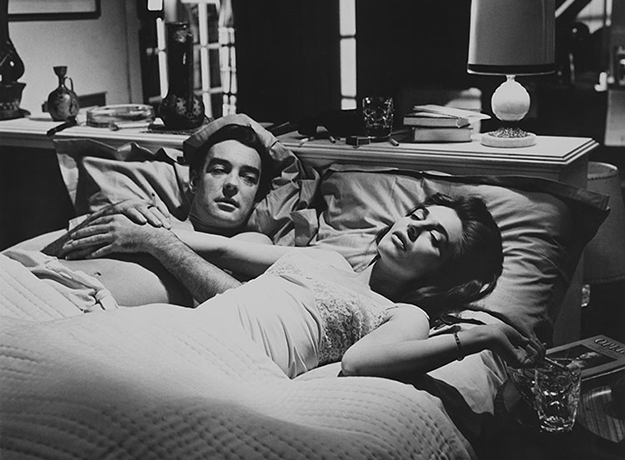
The Pumpkin Eater
While The Innocents is Clayton’s masterpiece, or at least his most perfect film, The Pumpkin Eater is his riskiest and perhaps his most characteristic work. It’s brutally incisive yet drifting, unresolved and mysterious yet painstakingly aware of the deepest hurts and humiliations that the characters suffer. Bancroft is way out on a limb emotionally in the scene where Jo breaks down in Harrods department store, and Clayton prepares for this trauma with a gently rising shot of Jo from overhead before a hard cut to her face weeping and laughing in extreme close-up. Jo’s pain here is savage, and it matches up with a later series of shots where the camera keeps coming in closer and closer to James Mason’s mouth as his character explodes at Jo in venomous rage.
Clayton’s adaptation of The Great Gatsby was considered a failure, but it is a quixotic, honorable failure, with an unusual emphasis on sultry weather (it is one of the sweatiest movies of all time). A few years later in 1977, Clayton suffered a stroke, and many of his projects did not come to fruition, but he made a notable return with The Lonely Passion of Judith Hearne. This 1987 film is slightly more conventional, or less feverish, than his earlier work, though he does make use of an unusual effect: he slightly distorts Maggie Smith’s screaming voice in the enormously painful scene where the alcoholic Irish dreamer she plays, Judith Hearne, physically assaults an altar in a church.
Smith is perhaps the ultimate Clayton actress because she always uses her hands so expressively and even eccentrically, for if there is one thing that binds Clayton’s small but vital filmography together it is his visual obsession with hands. Signoret’s Alice clasps the hand of her worthless lover in Room at the Top, lavishing all of her love on him like a spotlight turned on in a darkened room. The praying hands of Miss Giddens beside the opening credits of The Innocents look like a flower about to drop all of its petals. Then there are the later close-ups of her hands brushing away both real and ghostly tears, leading up to the climactic scene in which Peter Quint’s sadistic ghost raises his hand to deal a death blow.
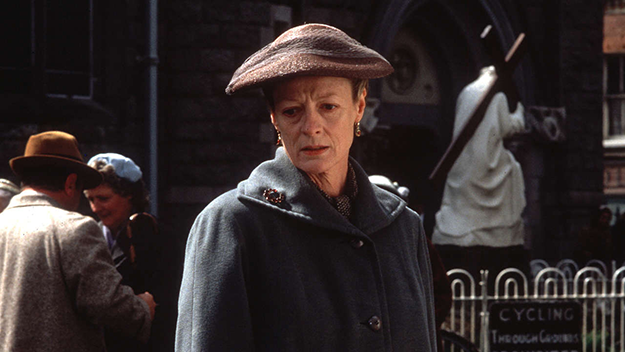
The Lonely Passion of Judith Hearne
In The Pumpkin Eater, the happily clasped hands of Jo and Jake dissolve to the miserable Jo remembering that earlier happiness. The hand of a mentally unbalanced woman (Yootha Joyce) becomes a claw as she menaces Jo in a beauty parlor. And toward the end of his career, Clayton emphasizes the ruby rings on the hand of the manipulative Aunt D’Arcy (Wendy Hiller) in The Lonely Passion of Judith Hearne, which will ensure that her niece will never have a life of her own. For Clayton, film was always a matter of hands that might kill or caress and of dream worlds built up by romantics that inevitably get destroyed and leave far smaller hopes afterward.
The Pumpkin Eater and The Innocents air November 10 on Turner Classic Movies.
Dan Callahan is the author of Barbara Stanwyck: The Miracle Woman (2012) and Vanessa: The Life of Vanessa Redgrave (2014).



